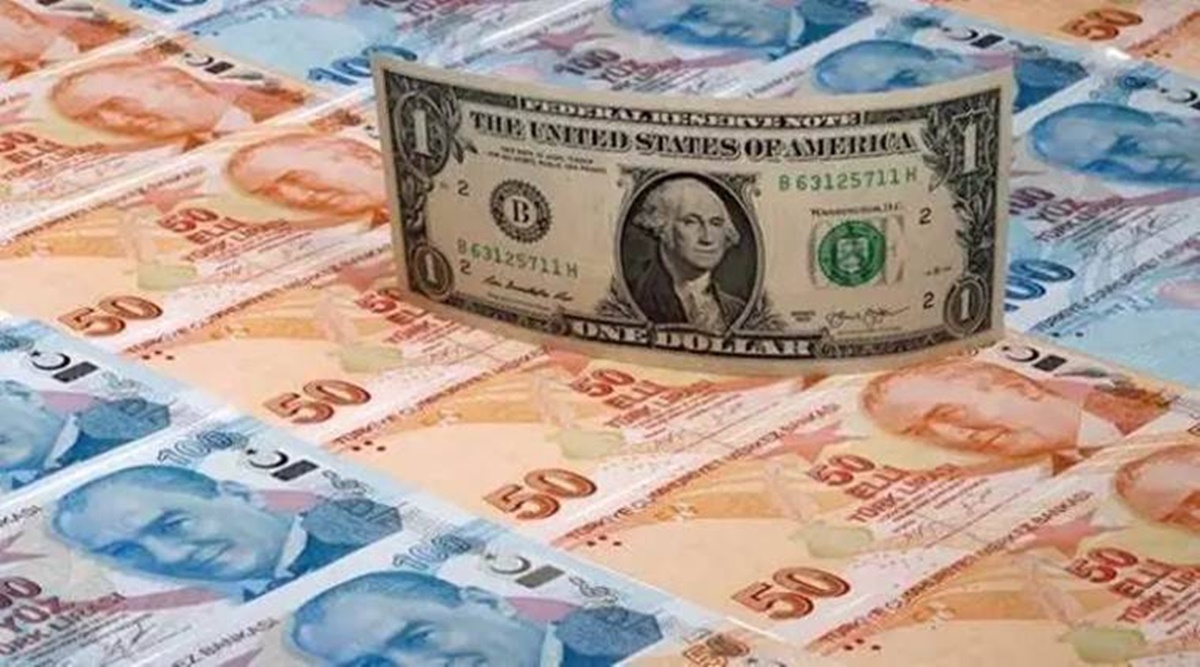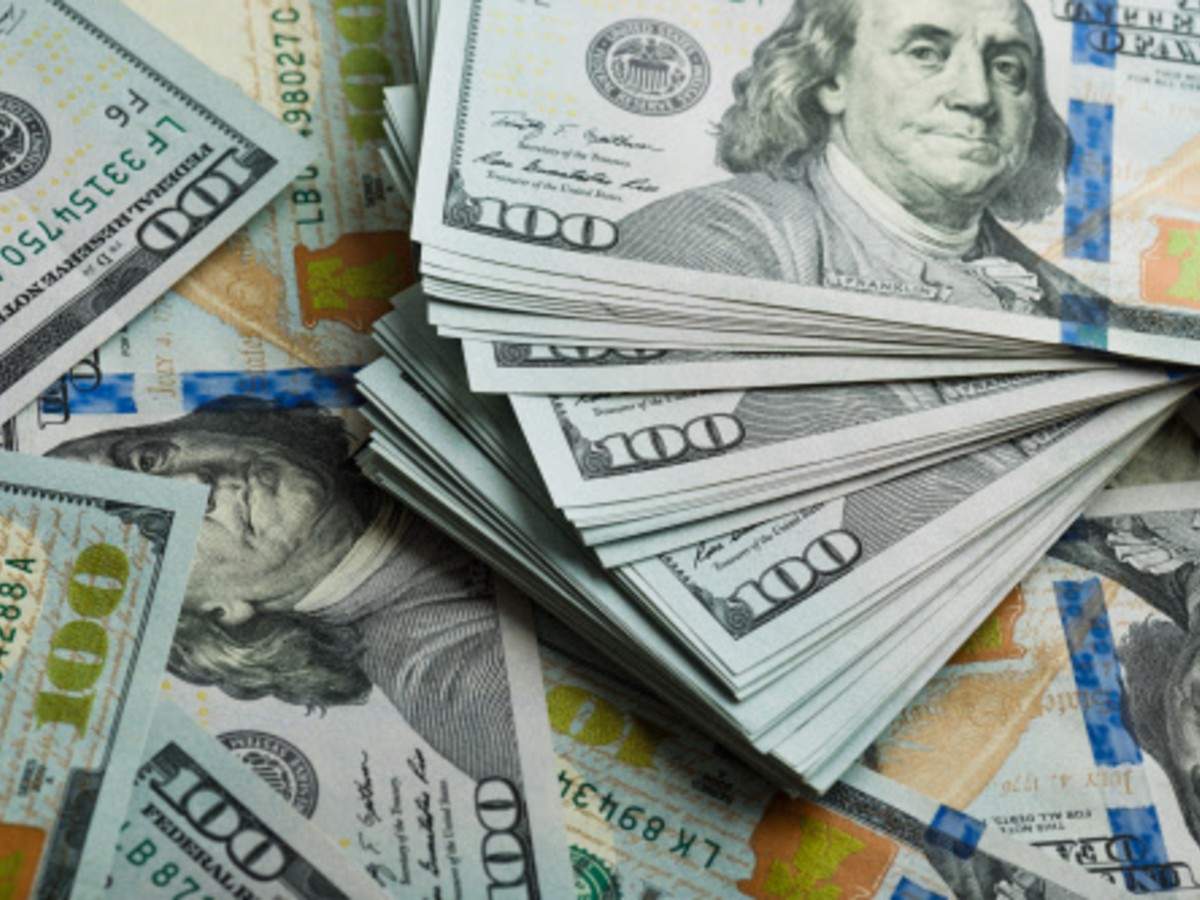India’s foreign exchange reserves are at an alarmingly low level and have dropped by 23 months.

India’s forex reserves are at an alarmingly low stage and have dropped with the aid of 23 months of use. For the week ending September 2, India’s overseas foreign exchange (forex) reserves fell with the aid of $7.941 billion to $553.one zero five billion, the lowest level in over a year, consistent with figures from the Reserve Bank of India (RBI).
The state’s foreign reserves have dropped for the 6th consecutive week. The forex reserves had been reduced with the aid of using $6.687 billion the week earlier and with the aid of using $3.007 billion at some point of the week finishing August 26.
The Reserve Bank of India saved its currency and intervened to save the rupee from falling beyond eighty to the greenback at some point every week whilst the greenback surged to over-decade highs, inflicting India’s forex reserves to plummet to their lowest stage in more than a decade and staining the third consecutive week of decline.

The foreign exchange reserves of the state dropped with the aid of $6.687 billion to $564.053 billion within the week ending August 19, achieving their lowest stage in more than a year and falling for the third consecutive week, consistent with the RBI’s weekly information statistics.
The maximum last week had the most important quantity decline since mid-July, totaling $6.687 billion. As the RBI continues to intervene inside the forex markets to protect the rupee, the state’s foreign reserves have fallen precipitously in recent months. The biggest factor of overseas forex reserves, overseas forex belongings, reduced with the aid of $6.527 billion to $492.117 billion for the week ended September 2, consistent with the Reserve Bank of India’s weekly statistics supplement.
In the 2 weeks prior, the overseas forex belongings had been reduced with the aid of $2.571 billion and $5.779 billion, respectively. The state’s imports dropped to $570.74 billion in the week ending August 12 from the week earlier, a lack of $2.238 billion. India’s FX struggle in its chest has reduced each week since early July, except for the upward thrust in the very last week of July, which seems to be a statistical aberration. It has been reduced for 20 of the last 26 weeks since late February when Russia invaded Ukraine.
The rupee has fallen from around seventy-four to close to eighty against the greenback, a trend that experts say the RBI has maintained vehemently, echoing a drop in FX reserves of slightly more than sixty-seven billion since the Ukraine disaster and more than eighty billion from all-time highs last year. The effect of the appreciation or depreciation of non-greenback currencies like the Euro, British Pound Sterling, and Japanese Yen held in forex reserves is blanketed within the overseas forex belongings expressed in US dollars.
During the reviewed week, the forex reserves’ personal additives were all reduced. During the week ending September 2, the cost of gold reserves fell by $1.339 billion to $38.303 billion. According to the RBI information, the cost of India’s Special Drawing Rights (SDRs) with the IMF was reduced with the aid of $50 million from $17.782 billion at some point of the week under consideration.
According to the RBI Weekly Statistical Supplement, India’s reserve function with the IMF was reduced with the aid of using $24 million to $4.902 billion at some point of the week finishing September 2. During the week ending March 11, 2022, India’s overseas forex reserves were reduced by $9.sixty-four billion to $622.275 billion because the rupee weakened against the American greenback amid a boom in crude oil fees and capital outflows brought on by chronic promotion with the aid of overseas portfolio buyers (FPIs).

The COVID-19 epidemic reached India during the week of March 20, 2020, and FPIs withdrew cash, causing the reserves to plummet by $11.98 billion, the largest loss in over a year. The Reserve Bank of India (RBI) bought dollars to prevent the rupee from devaluing further after it dropped below the 77 level.
When the rupee crossed the 76-stage and commenced to transport closer to the seventy-seven-stage, the RBI intervened with the aid of promoting bucks through PSU banks. The fate of the Indian rupee has been decided by the raging greenback on global markets, which has been fueled by a flight of capital into greenback-denominated assets at the expense of almost all other global currencies.
The change deficit continues to be a primary problem, and even if the price has recovered to $102, the strain continues to be felt because India’s essential truth hasn’t altered. India’s current account deficit reached an all-time high of $31 billion last month because of developing crude imports, which the state relies upon for more than 80% of its power needs.
This raises questions about the capacity of the state to maintain its modern account. The RBI has stepped in and has publicly said that it’ll do all it takes to keep the rupee from severe volatility so that it will reduce the effect of a geopolitical disaster on the larger economy. The RBI has helped keep the Indian currency below that level by selling dollars in the spot and futures markets, despite the rupee briefly reaching its rock bottom of eighty against the greenback.
On March 8, the RBI purchased $5.35 billion from banks while also committing to purchasing the cash lower back at the end of the swap-agreement period. The wide variety of rupees to be had inside the machine is reduced while the imperative financial institution sells bucks and withdraws an equal quantity in rupees. The rupee hit the seventy-seven mark as opposed to the greenback because of extra bucks getting into the market.
Nevertheless, consistent with RBI governor Shaktikanta Das, following the most recent charge-putting meeting, whilst the imperative financial institution raised quotes for the third time in a row, India’s forex reserves are the fourth highest in the world. Although the RBI has a stated policy of intervening in currency markets when it detects volatility, the central bank never sets a positive target as its goal.

It has efficiently resisted the rupee’s depreciation over the eighty-to-greenback threshold within the gift phase. According to an exclusive Reuter’s document mentioning authorities and commercial enterprise sources, India can also offer incentives to exporters settling transactions in rupees so that it will increase the beauty of the currency and improve commodity income for Russia, which has been reduced because of western sanctions.
The RBI last month adopted a framework for rupee-based foreign exchange settlements, and the flow wants to bolster the Russian exchange. Indian businesses have already started exchanging dollars and euros for Asian currencies to settle transactions in order to avoid the sanctions the West has imposed on Russia as a result of its invasion of Ukraine. According to a Reuter’s source, banks and sellers have increased their usage of the rupee for settlements since they may still be waiting for further information about the government’s and important financial institutions’ incentives to use the rupee.
The global economic crisis of 2008–09 resulted in an absolute lack of reserves of $70 billion, which was later reduced to $17 billion thanks to COVID–19 technology and to $46 billion as of July 29 of this year due to the impact of the invasion of Ukraine. What caused the rupee to reappear despite the pressure? Foreign investors withdrew Rs 41,617 crore in March, sharply weakening the rupee.
This outflow has occurred following withdrawals of Rs. 45,720 crores in February and Rs. 41,346 crores in January. Since October 1, 2021, FPIs have withdrawn Rs 225,649 crore (except FPI investments in IPOs) frequently in anticipation of a US Federal Reserve hobby charge boom.
Furthermore, as the conflict between Russia and Ukraine worsened, Brent crude prices rose to a nearly 14-year high of $140. Because India imports around 80% of its home needs, rising crude oil prices could also have ended in a pointy boom in the country’s foreign demand. Foreign currency belongings (FCA), gold holdings, and SDRs (unique drawing rights) of the International Monetary Fund make up the majority of a country’s forex reserves.
To improve the rupee, the RBI bought bucks from its FCA purse, which turned into held in foreign places banks, overseas imperative banks, and overseas belongings. The week ended March 11, and overseas forex belongings fell by $11.108 billion, falling from $554.359 billion, consistent with figures from the RBI.
The results of the greenback’s appreciation or depreciation in addition to non-US currencies just like the euro, pound, and yen held in forex reserves are blanketed within the overseas forex belongings. However, the value of gold reserves increased by $1.522 billion to $43.842 billion during the same week, as gold prices rose in the aftermath of the Russia-Ukraine conflict.
India’s forex reserves did, however, decline after growing with the aid of using $394 million to $631.ninety-two billion at some point of the week before March 4. In the week ending, it reached a record-breaking excess of $642.453 billion.
Edited by Prakriti Arora





